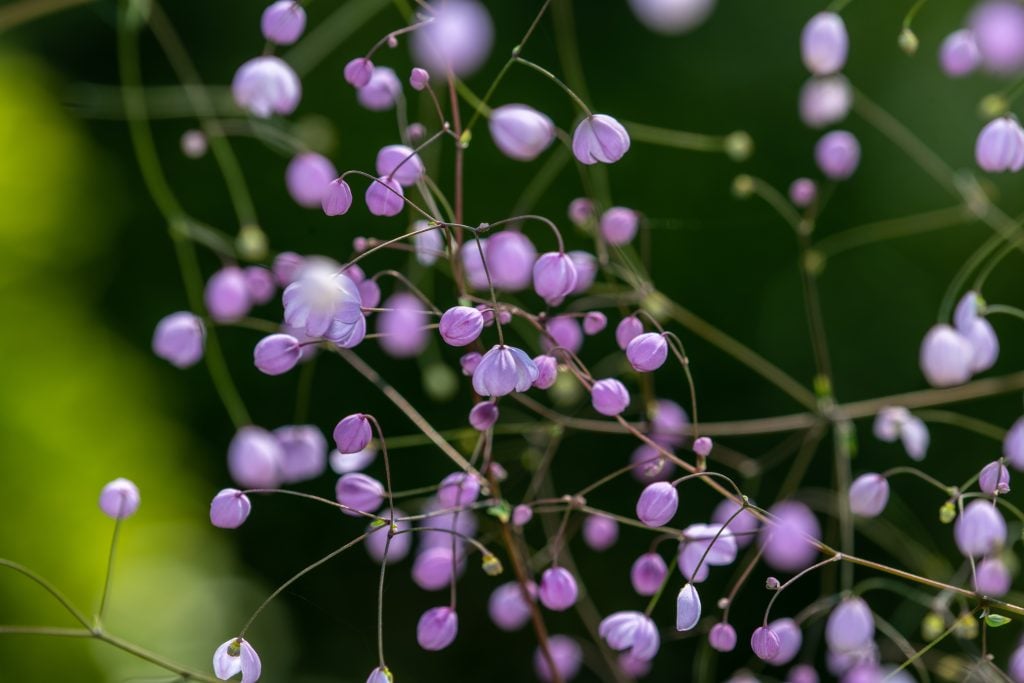Table of Contents
Do you love the elegance of lavender flowers, which represent tranquilly, purity, and grace? Flowers in this colour can be eye-catching and stand out in any garden. Thalictrum meadow rue is one such plant that has gorgeous lavender blossoms that look lacy and delicate.
Did you know there are over 200 different species of Thalictrum plants in the world? These lovely plants are called meadow rue plants and range from Chinese meadow rues to yellow meadow rues. We understand that growing new plants can be tricky since each plant is unique. But don’t worry! Meadow rue plants are popular among gardeners since they are simple to grow and care for.
Let’s learn more about meadow rues so we can effectively grow them!
Overview of Meadow Rue Plants
| Meadow Rue Plant | |
|---|---|
| Scientific Name | Thalictrum spp. |
| Common Names | Meadow Rue, Meadowrue, Thalia |
| Plant Family | Ranunculaceae |
| Plant Type | Herbaceous perennial plant |
| Height | Up to 6 feet (1.8 meters) |
| Width | Up to 3 feet (0.9 meters) |
| Foliage | Leaves with tiny leaflets that are alternately arranged and pinnately compound. |
| Flowers | Tiny flowers with many stamens and pistils that grow in clusters or panicles. |
| Flower Colors | White, pink, yellow, greenish-yellow, purple, or blue, depending on the species |
| Blooming Season | Late spring to early summer |
| Sun Exposure | Full sun to partial shade |
| Soil | Moist, well-drained soil |
| Maintenance | Low-maintenance |
| Uses | Garden ornamental, medicinal food source for some wildlife and livestock |
| Propagation | Seed, division, or cuttings |
| Common Species | Thalictrum aquilegiifolium, Thalictrum flavum, Thalictrum rochbrunianum, Thalictrum delavayi |
| Companion Plants | Hosta, ferns, astilbe, coral bells, bleeding heart, columbine |
| Pests and Diseases | Leaf spot, powdery mildew, rust, and aphids |
| Interesting Facts | Thalictrum is derived from the Greek word thaliktron, which means “a plant used to purify milk.” Traditional medicine has utilised the plant to cure a variety of diseases, including fever, digestive issues, and menstrual cramps. |
Meadow rues are beautiful herbaceous plants that are quite easy to grow. Unlike other wildflowers, these plants develop more slowly and can take up to three years to mature. These plants are often planted in containers as nursery plants in the spring or immediately sown into the soil in the autumn.
You can easily cultivate meadow rue if you get it from nurseries where the plants are sold when they are about a year old.
How to Grow Meadow Rue?
Follow the simple instructions below to cultivate your own meadow rue and wow anybody who enters your yard with these lovely flowers.
1. Choose the Ideal Location
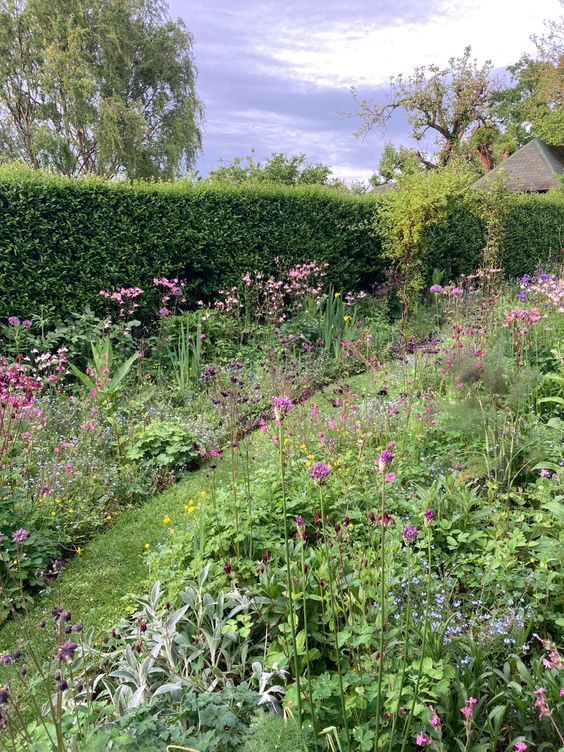
Meadow rue plants are native to many countries and can thrive in a variety of growing situations. You must select a spot with wet, well-drained soil and full sun to moderate shade. Meadow rues can tolerate moderate drought, but the soil should not be allowed to dry out completely, especially during the hot summer months, to avoid straining the plants.
Meadow rues are typically grown in meadows and along woodland borders, but they can also be utilised as a border plant or as a focal point in a mixed flower garden. One of the most significant factors to consider while deciding where to grow meadow rue is the plant’s maturity size, which varies depending on the species. Meadow Rue plants can grow up to six feet tall, so they demand a large space with plenty of room for growth.
2. Prepare the Soil

After selecting the best area for growing meadow rue, prepare the soil accordingly. The initial step should be to clear the specified space. Using garden knives or a chemical weed killer, remove any debris or weeds from the area. The soil should next be tested using a pH tester to see if it has the proper pH level. Meadow rue plants prefer slightly acidic to neutral soil with a pH of 5.5 to 7.0.
To improve soil fertility and drainage, use high-quality compost or well-rotted manure to amend the soil. The following step is to tilt the soil in preparation for planting. Use a garden fork or tiller to loosen the soil to a depth of 8 to 10 inches. This will aid in the improvement of soil aeration and drainage.
The final step in soil preparation is to mulch it. Apply an organic mulch layer around the plants to help preserve soil moisture and control weeds. Avoid placing mulch directly against plant stems, as this can stimulate the growth of fungal infections.
Tip: In the majority of cases, meadow rue does not require fertilisers. However, if necessary, add a balanced fertiliser in the spring when new growth starts.
3. Planting the Meadow Rue
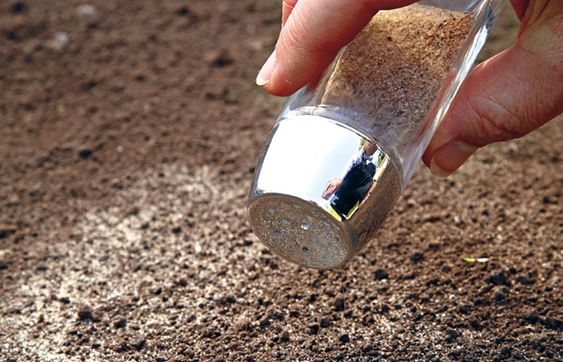
There are many ways to plant meadow rue in your yard, ranging from direct seeding to purchasing potted plants. Let’s look at them so you can decide which is best for you.
- Potted plants: This is the simplest method for growing meadow rue in your garden. You can buy potted meadow rue plants from nurseries, then dig a deep hole to give the roots lots of freedom to grow, then add some high-quality compost and fill in the gaps with dirt. These plants should not be kept in pots because they will expand in size.
- Sowing: Meadow rue seeds can be sown directly in the garden bed. Select a sunny or somewhat shaded spot with well-draining soil. Sow the seeds in the soil a quarter of an inch deep and keep them moist until they sprout, which can take up to four weeks.
- Propagation: If you want to cultivate meadow rues in a more advanced manner, this is the method for you. Meadow rues can be propagated by dividing established plants in the spring or autumn. With a sharp knife, gently dig up the plant and carefully split the roots into smaller clumps. Replant the smaller clumps in a new area using the same transplanting procedures.
Meadow Rue Care
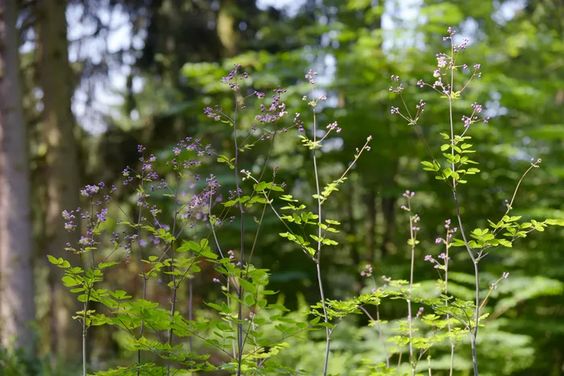
These lovely plants with fluffy blossoms are actually extremely simple to care for and will make an adorable and easy addition to your garden. Watering meadow rues properly is one of the most important things you can do to care for them. Meadow rue requires regular moisture to thrive, so keep the soil damp but not flooded. Water deeply once a week or more regularly if the weather is hot and dry.
Meadow rues do not require pruning; however, deadheading wasted blooms can help them bloom longer. These magnificent plants are also generally resistant to pests and diseases; however, in humid conditions, they can be prone to powdery mildew. Provide adequate air circulation and minimise overhead watering to avoid this.
Types of Meadow Rues
There are numerous types of meadow rues in the world. These perennials can be found in woodlands and meadows throughout the UK. A general overview of each type can assist you in determining the best one for your garden, making cultivating them a breeze.
Many meadow rue species are not available in normal nurseries, but they can be purchased through natural cultivators or online merchants.
Let’s get acquainted with the most common meadow rues.
1. Chinese Meadow Rue (Thalictrum Delavayi)
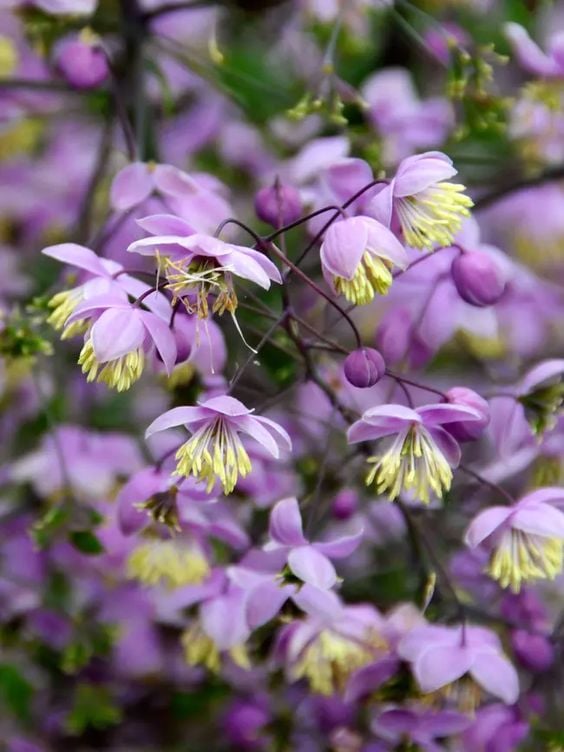
Chinese meadow rue is native to China, specifically the regions of Yunnan and Sichuan. It is also known as Delavay’s Meadow Rue. Chinese Meadow rues are hardy perennials with delicate, fern-like foliage that can grow up to four feet tall. In midsummer, the plant produces clusters of small, pale lavender or pinkish-purple flowers that attract bees and other pollinators to the garden.
Traditional Chinese medicine uses Chinese meadow rue to treat a range of diseases, including fever, headaches, and respiratory problems.
2. Columbine Meadow Rue (Thalictrum aquilegifolium)
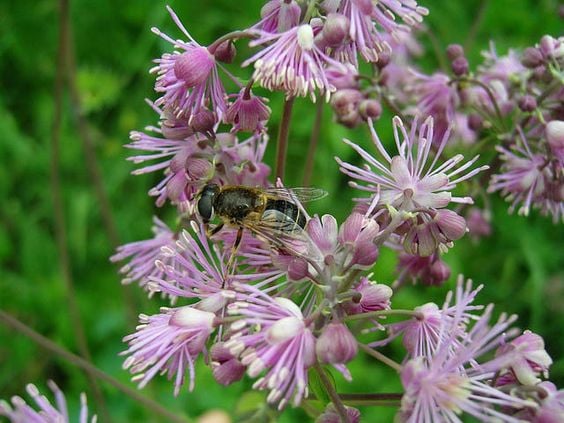
Columbine meadow is native to Europe. This hardy perennial can reach a height of 3-4 feet and has exquisite blue-green foliage that mimics the leaves of columbine plants, hence the popular name. Columbine meadow rue blooms in early June and has clusters of lavender or pink flowers that look like miniature firework displays.
3. Low Meadow Rue (Thalictrum minus)
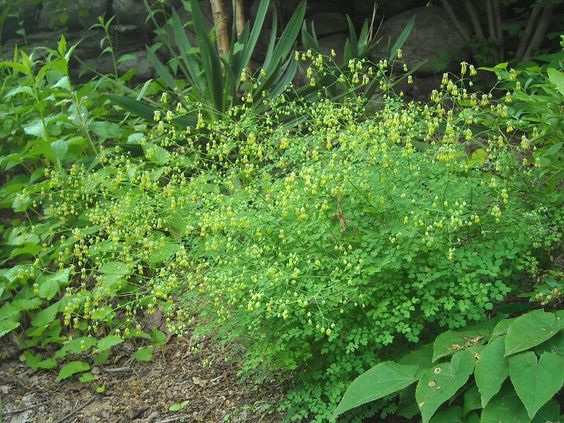
This species of meadow rue is native to North America. It grows to a height of 1-2 feet, making it one of the smallest meadow rue types.
Low meadow rue blooms in late spring to early summer with clusters of little white or greenish-yellow flowers. The flowers aren’t as prominent as those of other meadow rue species, but they’re nonetheless lovely and can provide a delicate touch to the garden.
4. Yellow Meadow Rue (Thalictrum flavum)
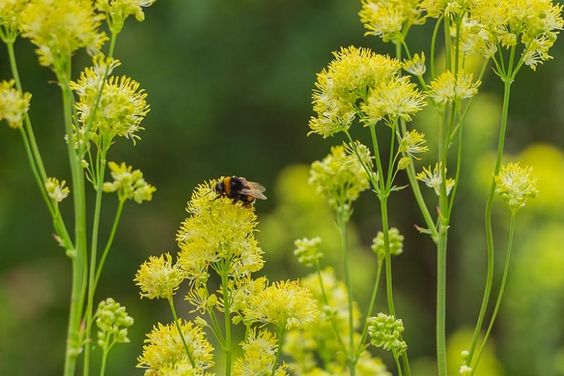
Yellow Meadow rue is native to Europe as well as Western Asia. It can reach 3 feet in height and has blue-green, fern-like foliage that gives it an airy appearance.
Yellow meadow rue blooms in early summer with clusters of vivid yellow flowers that attract bees and butterflies. The flowers are followed by feathery seed heads that can remain in the yard well into the autumn, giving beauty to the garden.
5. Lavender Mist Meadow Rue (Thalictrum rochebrunianum)
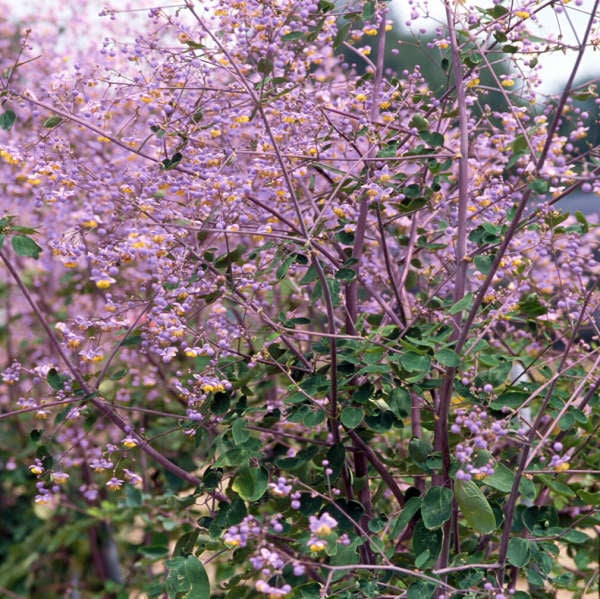
This type of meadow rue is native to China and can reach a massive height of 6 feet, making it a spectacular addition to any garden or landscape.
Meadow Lavender Mist Rue has delicate, fern-like leaves that turn blue-green in the summer and produce clusters of petite, lavender-coloured flowers. The blossoms are delicate and misty, giving the plant its common name.
6. Early Meadow Rue (Thalictrum dioicum)
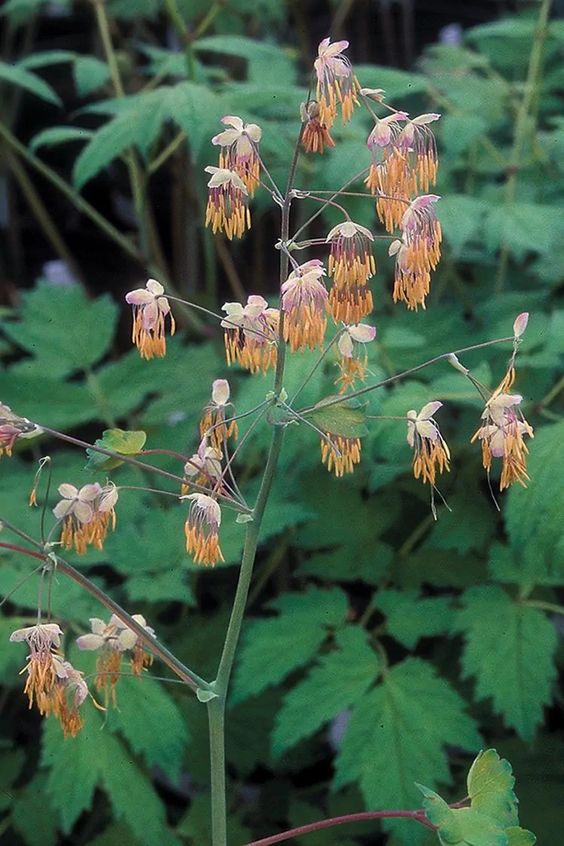
Early meadow rue is a North American native with delicate, fern-like foliage that grows up to 2-3 feet tall. This meadow rue blooms in early spring with clusters of small, yellowish-green flowers, making it one of the first plants to bloom during the growing season. The flowers attract bees and other pollinators and perform a crucial role in providing these insects with early-season nectar.
Unleash the Delicate Beauty
Meadow rues are lovely and well worth the effort! We hope this article has helped you understand how to grow meadow rue plants in your garden and how to care for them.
To choose the best species of meadow rue to grow, consider the size and colour of the bloom as well as the climate of your region. Meadow rues come in a variety of colours, ranging from gorgeous pinkish-lavender Chinese meadow rues to vibrant yellow meadow rues. These plants, which are prevalent in UK meadows and woodlands, are ideal for beginners to cultivate due to their simple growth and care requirements.
By growing meadow rue, you will not only make your garden aesthetically pleasing but also contribute to the environment.
Frequently Asked Questions
Is Meadow Rue Invasive?
While some meadow rue species can self-seed and spread in favourable conditions, they are not considered invasive. In truth, many meadow rue species are native to their particular locations and play a key role in their natural ecosystems.
What is the Lifespan of The Meadow Rue Plant?
Since meadow rues are perennial plants, they can last for decades in an ideal environment with proper care and gradually expand.
How Tall Does Chinese meadow rue Grow?
The Chinese meadow rue can reach quite a height. This species can grow to a height of 3 to 6 feet (1 to 2 metres) and a width of 2 to 3 feet (60 to 90 centimetres).

